HLC Submits Criminal Complaints for War Crimes in Kalesija and Vlasenica in 1992

 The Humanitarian Law Center (HLC) has filed criminal complaints with the Public Prosecutor’s Office for War Crimes of the Republic of Serbia, against Slobodan Pajić and Vlastimir Bećarević, former officers of the First Birač Infantry Brigade of the Army of Republika Srpska (VRS), on reasonable suspicion that they ordered and/or committed war crimes in the municipalities of Vlasenica and Kalesija during May and June 1992.
The Humanitarian Law Center (HLC) has filed criminal complaints with the Public Prosecutor’s Office for War Crimes of the Republic of Serbia, against Slobodan Pajić and Vlastimir Bećarević, former officers of the First Birač Infantry Brigade of the Army of Republika Srpska (VRS), on reasonable suspicion that they ordered and/or committed war crimes in the municipalities of Vlasenica and Kalesija during May and June 1992.
The criminal complaints against Pajić and Bećarević are the result of the Humanitarian Law Center’s research into war crimes committed in the zone of responsibility of the First Birač Infantry Brigade under the command of Svetozar Andrić. The HLC presented the findings of this research to the public in late February 2024 in the Dossier “Svetozar Andrić“. The First Birač Infantry Brigade of the VRS, formed in May 1992, participated in the expulsion of the non-Serb population from the municipalities of Zvornik, Vlasenica, and Kalesija, the killing of civilians during the occupation of the territory, and the burning and destruction of villages.






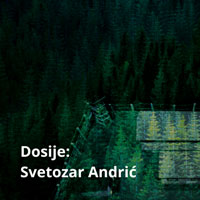
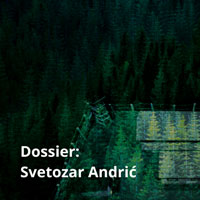
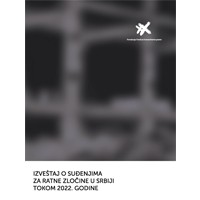
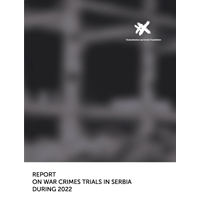
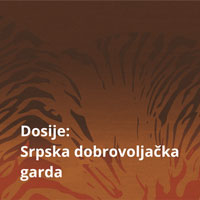
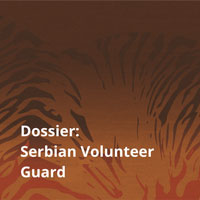 The crimes committed by the Serbian Volunteer Guard (SDG/the Guard), a group formed by Željko Ražnatović (Arkan), and its links with the Serbian police, military and political establishment, were an integral part of the indictments of the ICTY’s Office of the Prosecutor against Slobodan Milošević, Goran Hadžić, Jovica Stanišić and Franko Simatović.
The crimes committed by the Serbian Volunteer Guard (SDG/the Guard), a group formed by Željko Ražnatović (Arkan), and its links with the Serbian police, military and political establishment, were an integral part of the indictments of the ICTY’s Office of the Prosecutor against Slobodan Milošević, Goran Hadžić, Jovica Stanišić and Franko Simatović.
 The Report includes an analysis of 26 cases monitored by the HLC before the war crimes departments of the Higher Court and the Court of Appeals in Belgrade. Also, the Report contains an overview of the general findings on war crimes trials during 2021, as well as important socio-political events that are vital for war crimes trials in Serbia.
The Report includes an analysis of 26 cases monitored by the HLC before the war crimes departments of the Higher Court and the Court of Appeals in Belgrade. Also, the Report contains an overview of the general findings on war crimes trials during 2021, as well as important socio-political events that are vital for war crimes trials in Serbia.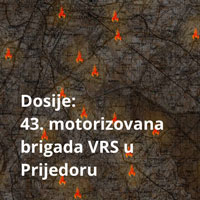
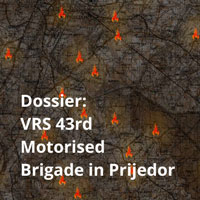 Between May and August 1992, units of the 1st Krajina Corps of the Army of the Republika Srpska (VRS), together with the police of the Republika Srpska, Territorial Defence Force (TO) units and various volunteer groups, carried out attacks on a large number villages in the municipality of Prijedor inhabited predominantly by Bosniaks and Croats.
Between May and August 1992, units of the 1st Krajina Corps of the Army of the Republika Srpska (VRS), together with the police of the Republika Srpska, Territorial Defence Force (TO) units and various volunteer groups, carried out attacks on a large number villages in the municipality of Prijedor inhabited predominantly by Bosniaks and Croats.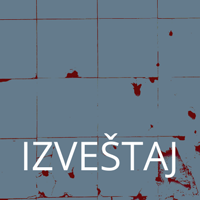
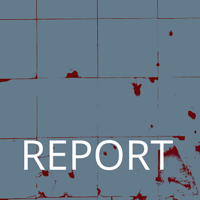 The HLC has monitored all war crimes trials conducted in the territory of Serbia in 2020, namely a total of 21 cases conducted before the War Crimes Departments of the Higher Court and/or the Court of Appeal in Belgrade.
The HLC has monitored all war crimes trials conducted in the territory of Serbia in 2020, namely a total of 21 cases conducted before the War Crimes Departments of the Higher Court and/or the Court of Appeal in Belgrade.
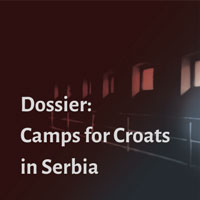 On November 18, 1991, after a three-month siege of the city, the Yugoslav Peoples’ Army (JNA) took over Vukovar with the assistance of the Serbian Territorial Defence Forces (TO) and military volunteer units. Upon occupying the city, a large number of members of the Croatian forces, as well as civilians, were captured by the JNA, including the wounded, women, minors and elderly people.
On November 18, 1991, after a three-month siege of the city, the Yugoslav Peoples’ Army (JNA) took over Vukovar with the assistance of the Serbian Territorial Defence Forces (TO) and military volunteer units. Upon occupying the city, a large number of members of the Croatian forces, as well as civilians, were captured by the JNA, including the wounded, women, minors and elderly people.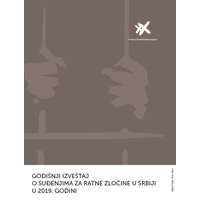
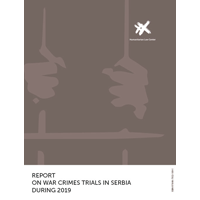 On the following
On the following 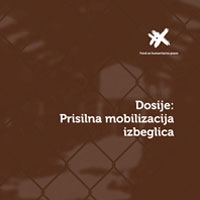
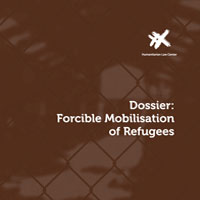 From the outbreak of war in Croatia and BiH, and especially in connection with the Croatian military-police operations “Flash” and “Storm”, about 500,000 Serbs, citizens of Croatia and BiH, fled to Serbia. Tens of thousands of Serbs from Croatia fled to Serbia during 1991 and 1992. They mostly exchanged their houses and property with Croats from Vojvodina, who, under pressure from the Serbian Radical Party and paramilitary groups, left Serbia. At least 200,000 people fled Croatia from May until the end of August 1995, during and after the “Flash” and “Storm” operations of the Croatian Army and the MUP. Most of the refugees were accommodated in reception centres across Serbia, in old hotels, unused public facilities, or with relatives and friends, and only a few were able to rent an apartment.
From the outbreak of war in Croatia and BiH, and especially in connection with the Croatian military-police operations “Flash” and “Storm”, about 500,000 Serbs, citizens of Croatia and BiH, fled to Serbia. Tens of thousands of Serbs from Croatia fled to Serbia during 1991 and 1992. They mostly exchanged their houses and property with Croats from Vojvodina, who, under pressure from the Serbian Radical Party and paramilitary groups, left Serbia. At least 200,000 people fled Croatia from May until the end of August 1995, during and after the “Flash” and “Storm” operations of the Croatian Army and the MUP. Most of the refugees were accommodated in reception centres across Serbia, in old hotels, unused public facilities, or with relatives and friends, and only a few were able to rent an apartment.